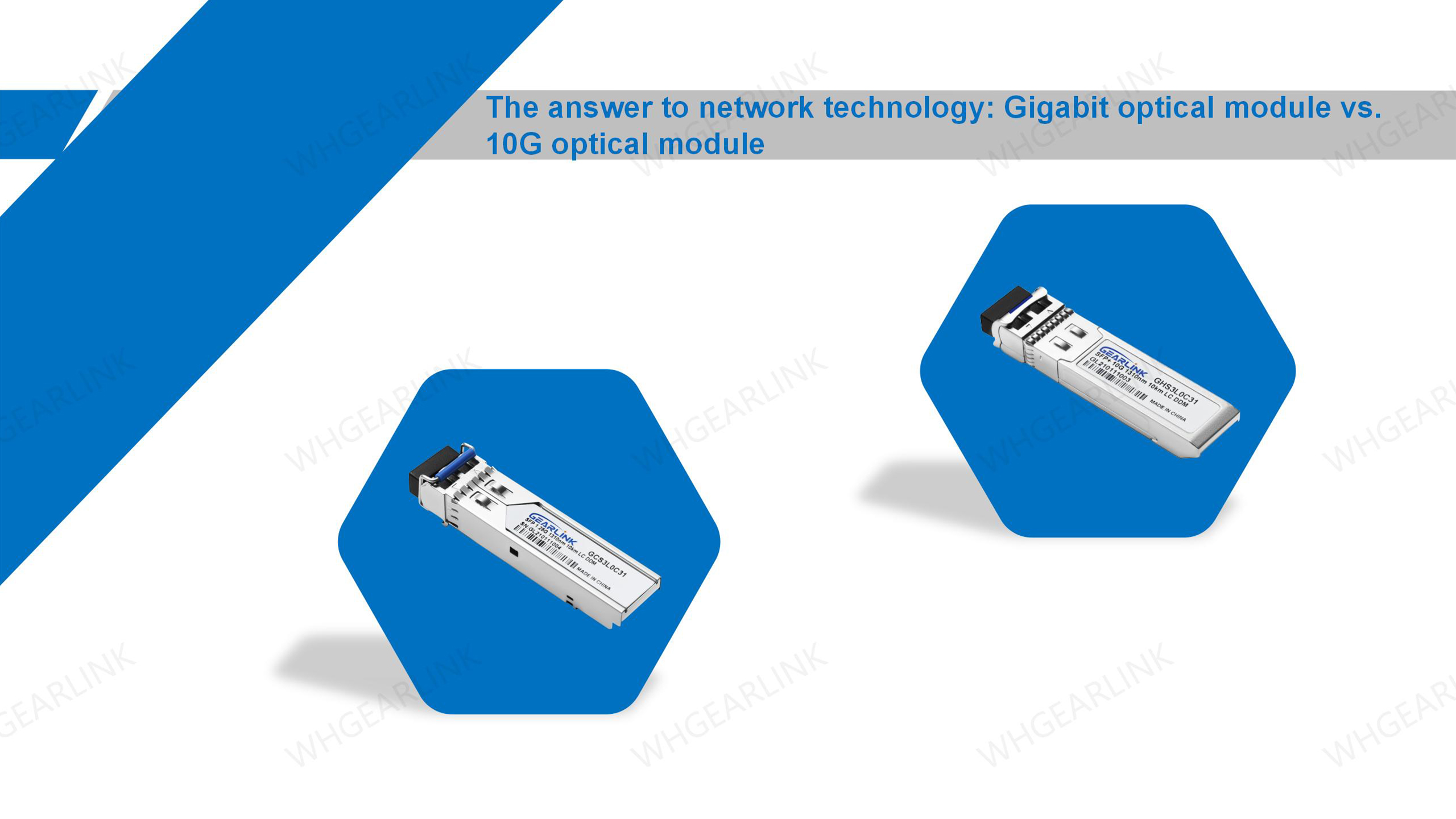This article will explore two important choices in the development of network technology: Gigabit optical transceivers and 10G optical transceivers. Through the analysis of their parameters and industry statistics, a comprehensive comparison and evaluation of the competition between them will be conducted, as well as their advantages and disadvantages in different application scenarios. At the same time, it will also look into the future development trends of network technology and changes in demand for optical transceivers.
With the continuous advancement of information technology and the expansion of application scenarios, the network's demand for higher bandwidth and faster transmission speeds has become increasingly urgent. In the process of meeting this demand, Gigabit optical transceivers and 10G optical transceivers have attracted much attention as two important options. This article will focus on the characteristics and applications of these two optical transceivers, and compare and evaluate them through industry statistics.
1. Gigabit optical transceiver: the choice of balancing bandwidth and cost
Gigabit optical transceivers are widely used in many fields due to their moderate bandwidth and relatively low cost. Its rate is 1.25Gbps, which can meet the needs of most application scenarios in life. Gigabit optical transceivers are widely used in enterprise networks, data centers, video transmission and other fields, and are regarded as a solution that balances bandwidth and cost.
The demand for Gigabit optical transceivers still dominates the current network market. It is widely used in various enterprise networks to provide stable connections and efficient data transmission. In addition, in data centers, Gigabit optical transceivers are also the main choice, meeting the needs of most applications.
The main advantages of Gigabit optical transceivers are relatively low cost and stable and reliable performance. It can meet the bandwidth needs of small and medium-sized enterprises and some large enterprises and has broad compatibility. However, as application scenarios continue to expand and network requirements increase, Gigabit optical transceivers may be limited in some high-bandwidth scenarios.
2. 10G optical transceiver: the choice to meet high-bandwidth applications
10G optical transceiver is an important development direction in future network technology. It provides a transmission speed of 10Gbps per second and can meet application scenarios with higher bandwidth requirements. In modern data-intensive applications, such as cloud computing, big data analysis and high-definition video transmission, 10G optical transceivers have great advantages due to their high-speed transmission and large-capacity characteristics.
According to industry statistics, with the continuous development of data centers and the increase in network demand, the market share of 10G optical transceivers has gradually expanded. It can provide users with faster and more stable data transmission in data centers, cloud computing, high-performance computing and other fields, and is favored by users.
The main advantage of 10G optical transceivers is to meet the needs of high bandwidth and large capacity. For applications such as high-performance computing and cloud computing, 10G optical transceivers can provide faster transmission speeds and higher data throughput, bringing users an excellent experience. However, the cost of 10G optical transceivers is relatively high and requires higher-level equipment support. Therefore, it is relatively rarely used in some small and medium-sized enterprises and traditional enterprises.
3. Future development trends and changes in demand
With the continuous expansion of network application scenarios and changes in user needs, the demand for higher bandwidth and faster transmission speeds in future network technology will continue to grow. In this context, 10G optical transceivers will become the choice of new-generation network technology and gradually replace the dominant position of Gigabit optical transceivers.
The development trend of future network technology will be towards higher bandwidth and faster transmission speed. At the same time, with the widespread application of emerging technologies such as the Internet of Things and 5G communications, the demand for high reliability and low latency will also become an important driving factor for network development. Therefore, optical transceiver manufacturers should pay close attention to technology development trends and continuously improve their R&D capabilities and product performance to meet the needs and challenges of future network technology.
This article looks forward to the development of future network technology by comparing and evaluating the parameters and industry statistics of Gigabit optical transceivers and 10 Gigabit optical transceivers. Gigabit optical transceivers still dominate as a choice that balances bandwidth and cost, while 10G optical transceivers have the advantage of meeting the needs of high-bandwidth applications. As the demand for higher bandwidth and faster transmission speeds continues to grow in future networks, 10G optical transceivers are expected to become the choice of next-generation network technology. Optical transceiver manufacturers should pay close attention to technology development trends and improve research and development capabilities to meet the needs and challenges of future network technology.


